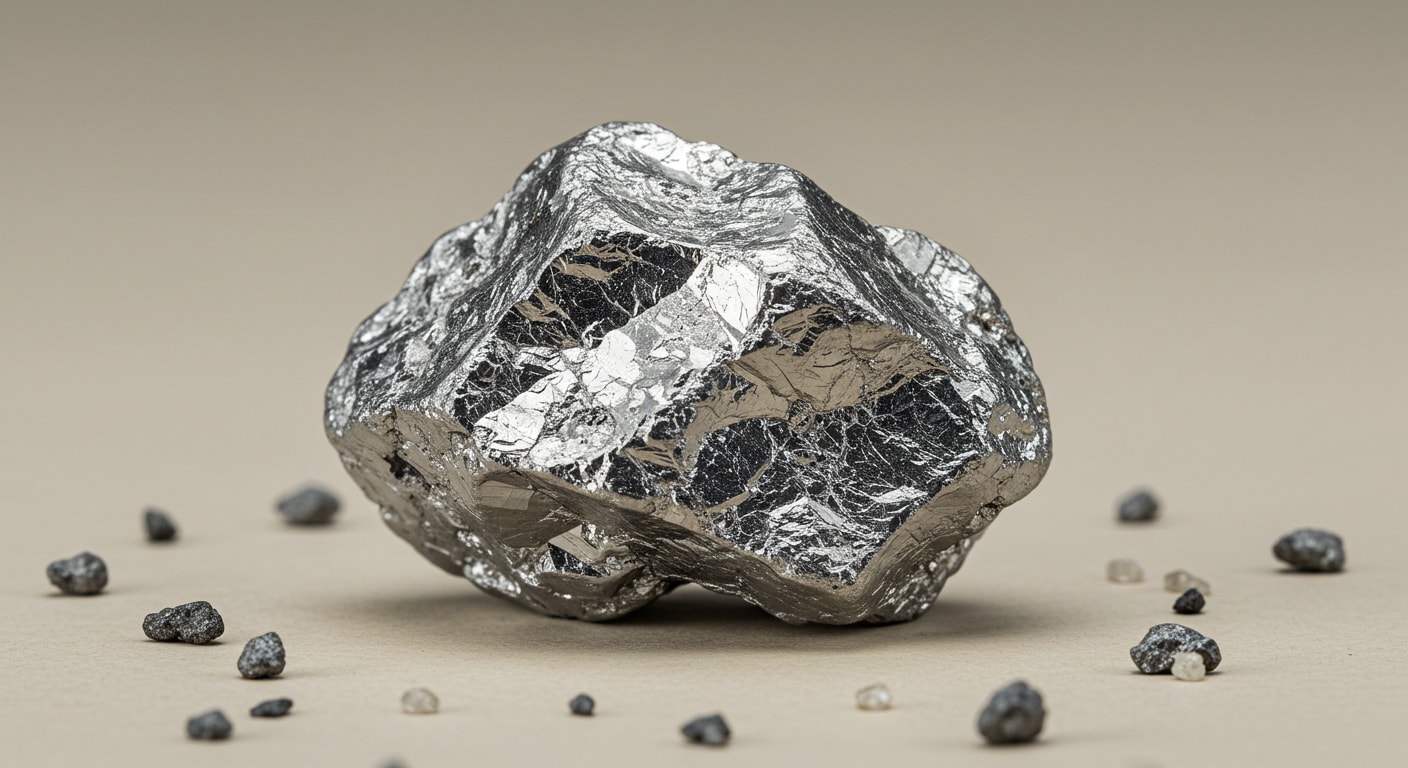What Is Ruthenium? | A Brief Guide on Ru and Its Uses

Considered to be a rare transition metal that belongs to the platinum group metals (PGMs), ruthenium is a chemical element with a wide range of applications. This brief guide will go over what the ruthenium element is, where you can find it, what it’s used for, and more.
What Is Ruthenium, and Is It a Platinum Group Metal?
Known to be a rare metal, ruthenium (Ru) is a chemical element with an atomic number of 44 and an atomic weight of 101.07. It belongs to the platinum metals and was discovered in 1844 by Karl Ernst Claus, a Russian chemist who found this new metal while analyzing platinum minerals.
Ruthenium in its purest form is relatively inert, and it has incredibly low toxicity, similar to other platinum metals.
Is Ruthenium a Noble Metal?
In the periodic table, the element ruthenium is listed as a noble metal. Unlike other platinum group metals, ruthenium often exhibits a wider range of oxidation states.
Is the Element Ruthenium a Precious Metal?
Any metal that’s naturally occurring and has a high economic value is referred to as a precious metal. Under that definition, ruthenium is a precious metal. It is rare and has unique properties like gold, silver, platinum, palladium, iridium, osmium, and rhodium.
Where Is Ruthenium Element Found?
Naturally occurring ruthenium is an incredibly rare metal that’s commonly found in the Earth’s crust (100 parts per trillion). It’s a by-product that’s derived from processing iron, copper, and platinum ores. This was almost an accidental discovery, though, because it’s not always found in every sample. After it was discovered, French chemists were unable to repeat the initial extraction, and some believed that it was a mistake.
Today, we can find these in the Bushveld Igneous Complex in South Africa (the largest world reserves of ruthenium) and the Ural Mountains of Russia. They can even be found in North and South America. The ruthenium metal is obtained commercially through complex extraction processes from these ores.
Physical and Chemical Properties of Ruthenium
Characterized as a silvery-white metal, metallic ruthenium has an exceptionally high melting point of approximately 4233°F and a boiling point of 7502°F, making it highly resistant to heat. Ru has a unique electron configuration with specific oxidation states ranging from -2 to +8.
The ruthenium element also has a high density, around 12.37 g/cm³. It’s hard and brittle, registering a Mohs hardness of 6.5 with severe wear resistance properties. That said, room temperature exposure is not enough for oxidation. This metal oxidizes at around 1472°F to form ruthenium oxide compounds.
You know the physical properties of ruthenium, but what are its chemical properties?
This element doesn’t react to most other metals. However, it does dissolve in fused alkalis and can react with chlorine gas and halogens at high temperatures.
Through chemical reactions, such as oxidation and halogenation, you can form many different ruthenium compounds, including ruthenium dioxide (RuO₂), ruthenium trichloride (RuCl₃), and ruthenium tetroxide (RuO₄). These are not typically formed through thermal decomposition.
This pure element is mostly resistant to aqua regia. That said, once oxidized, ruthenium ions can be dissolved in organic solvents and ammonium chloride solutions.
Ruthenium has seven naturally occurring isotopes, with only two stable isotopes. This precious metal also has several radioactive isotopes. Some ruthenium complexes can be highly toxic, similar to osmium tetroxide, requiring careful handling.
Another thing to note is that ruthenium has only one electron in its outer shell, unlike most group 8 elements, which have two. This anomaly is also seen in rhodium.
What Is Ruthenium Used For?
There are many different applications of ruthenium across various industries, including the following:
- Electronics: The majority of ruthenium consumed across the world is for electrical applications in the electronics industry. This precious metal is used to create wear-resistant electrical contacts, thick-film resistors, hard disk drives, and microelectronics. Ruthenium plating provides excellent corrosion resistance for electronic components.
- Catalysis: Ruthenium-based compounds have useful catalytic properties that can be used to make polynorbornene in the chemical industry. Ruthenium complexes are also great for Fischer–Tropsch synthesis reactions.
- Industrial applications: Many chemical industries use ruthenium as a catalyst, especially for hydrogenation and oxidation reactions. This element works well with other metals, with reaction energies typically measured in kJ/mol. While not commonly used in mainstream acetic acid or ammonia production, different ruthenium forms are being researched for future applications.
- Alloys: Several industries use ruthenium alloy compositions to harden platinum and palladium, improving the durability of jewelry. Adding small quantities of this pure metal to titanium can enhance its properties.
- Other Applications: There are many more applications of ruthenium, including the following:
- Fountain pen nibs
- Solar cells for renewable energy
- Electrochemistry applications
- Nuclear reactors as a fission product component
